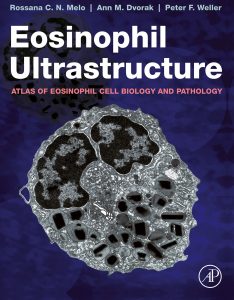Eosinophil Ultrastructure: Atlas of Eosinophil Cell Biology and Pathology entirely focuses on eosinophils and their functional roles in inflammation, host defense, and normal homeostatic activities. The book explores the ultrastructure of human eosinophils, highlighting biological processes observed under normal, experimental, and pathological conditions.
Created to fill a void in the eosinophil literature, the book includes an extensive array of electron microscopic images that illustrate the diversity of eosinophil morphology. While the atlas is a learning and teaching tool, it is mainly a helpful resource for researchers to identify distinguishing features and structural changes that arise during studies of human eosinophils.
The book also covers the ultrastructure of mouse eosinophils under normal and activation conditions and in the context of representative diseases.
Key features
– Gives guidelines to understand the human eosinophils in studies focused on structural biology, cellular immunology, innate and adaptive immunity, immune responses to pathogens, immunopathology, and inflammatory responses
– Provides a core of essential knowledge to identify both immature and mature eosinophils
– Comprises a representative compilation of the eosinophil ultrastructure during biological processes, such as activation and degranulation, mostly under experimental conditions
– Highlights eosinophil biological processes found in vivo during human diseases, thus providing a link between basic science and clinical aspects
– Helps identify distinguishing features and structural changes that arise during studies of human eosinophils after isolation from body fluids, while in cultures, or biopsies
– Explains the ultrastructural organization of mature and immature mouse eosinophils, highlighting the similarities/differences between them and human eosinophils
Authors: Rossana C. N. Melo; Ann M. Dvorak; Peter F. Weller
Check the book on:

